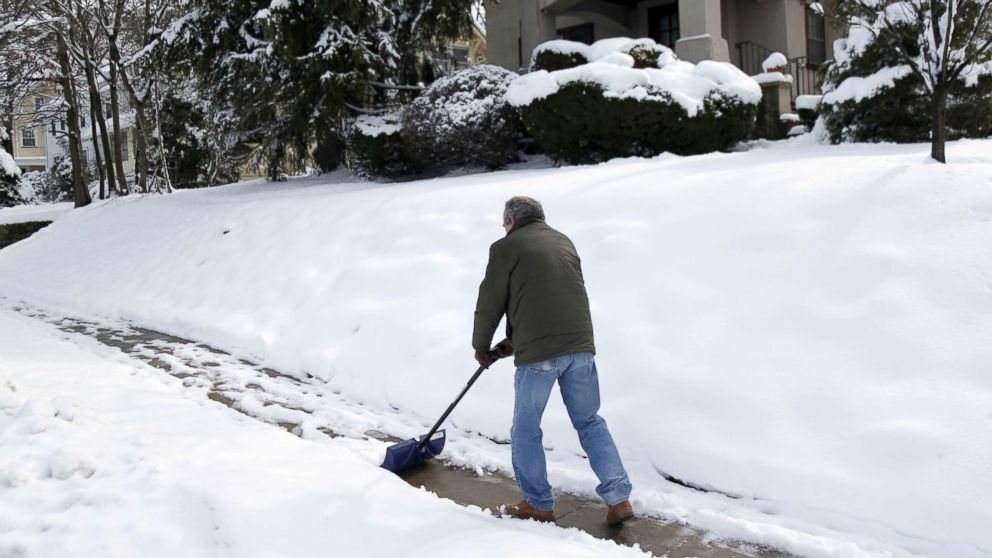Ever wake up to a winter wonderland outside your window and wonder, “How much snow did we get?” It’s a question that dances through our minds during those snowy mornings.
In this article, we would dive into how much snow you can get and how best to measure it. Keep reading!
Table of contents
How is the Amount of Snowfall Measured?
Snowfall is measured using a tool called a snow gauge. Here’s a simple explanation of the process:
- Snow Gauge Setup: Meteorologists place a snow gauge in an open area where it can collect snow without interference. The gauge is typically a cylindrical container with measuring markings on the side.
- Collection of Snow: As snow falls, it accumulates inside the snow gauge. The design of the gauge ensures that it collects an accurate representation of the snowfall in the specific location.
- Reading the Measurement: After the snowfall event, meteorologists check the snow gauge to see how much snow has accumulated. The measuring markings on the side of the gauge allow them to determine the depth of the snow.
- Recording and Reporting: The measured depth of snow is then recorded and reported as the amount of snowfall in that particular area. This information is crucial for weather forecasting, assessing environmental conditions, and making decisions related to safety and resource management.
In essence, a snow gauge is like a special container that helps meteorologists collect and measure the snow, providing valuable data about the amount of snowfall in a specific location.
You should read: What Do Guys Like to Be Called? (Top 25 Names)
Why is it important to measure snow?
Measuring snow is important for various reasons:
- Water Supply Prediction: Snowfall is a crucial source of water in many regions. Measuring the amount of snow helps predict water supply, especially in areas where snowmelt contributes to rivers and reservoirs.
- Avalanche Risk Assessment: In mountainous regions, where snow can pose avalanche risks, accurate snow measurement aids in assessing the potential for avalanches, allowing authorities to take preventive measures.
- Weather Forecasting: Snowfall data contributes to accurate weather forecasting. Meteorologists use this information to predict and communicate upcoming weather conditions, including snowstorms, helping communities prepare.
- Community Planning: Snow measurement is vital for community planning. It influences decisions related to road maintenance, school closures, and resource allocation during winter storms, ensuring the safety and well-being of residents.
- Environmental Impact Assessment: Snow measurement is part of environmental monitoring. It provides valuable data for assessing the impact of snowfall on ecosystems, wildlife, and overall environmental health.
Measuring snow is not just about knowing how much snow fell; it’s a key factor in making informed decisions that impact water resources, safety, and community planning. It plays a crucial role in understanding and managing the effects of snowfall on both natural environments and human communities.
Check out this related content: What Does GMS Mean on Snapchat?
Can I Measure Snow at Home?
Absolutely! You can measure snow at home using simple tools. Here’s a straightforward method:
- Select a Clear Area: Choose an open and flat area in your yard where the snowfall is undisturbed. Avoid areas with drifting or uneven accumulation.
- Grab a Ruler or Measuring Tape: Use a ruler or measuring tape to measure the depth of the snow. If you’re using a ruler, make sure it has clear markings in inches or centimeters.
- Measure in Multiple Spots: Snowfall can vary across even a small area. Measure the snow depth in multiple spots to get an average. This provides a more accurate representation of the overall snowfall.
- Record Your Measurements: Record the depth of snow in each spot and calculate the average by adding the measurements together and dividing by the number of measurements.
- Update After Additional Snowfall: If it continues to snow, repeat the process to measure the additional accumulation. Add the new measurements to your records.
This DIY method allows you to gauge the snowfall in your immediate surroundings. It might not be as precise as meteorological tools, but it gives you a good sense of the snow depth at your home.
Also check out this content: 26 Legitimate Ways to Get a Costco Student Membership for Free
What is the deepest snow on record?
The record for the deepest snowfall is held by the Mt. Baker Ski Area in Washington, USA. The greatest seasonal snowfall recorded at this ski resort was 1,140 inches (95 feet or approximately 29 meters) during the 1998-1999 winter season.
You should read: What Age Do You Graduate High School?
Conclusion
The magic of waking up to a snowy landscape often comes with the practical question of how much snow we got. Behind the scenes, meteorologists use precise tools to measure it, turning the whimsy of a winter morning into valuable data.
So, the next time you ask, “How much snow did we get?” know that it’s not just a curiosity; it’s a piece of the puzzle that helps us understand and navigate the winter wonderland around us.
Frequently Asked Questions
Meteorologists use a tool called a snow gauge, a cylindrical container placed in an open area, to collect and measure the snow. It’s like a snow collector that gives them an accurate reading.
Measuring snow is crucial for various reasons, like predicting water supply, assessing avalanche risk, and helping communities prepare for weather-related challenges. It’s all about staying informed and safe.
The methods might vary slightly based on the region, but the fundamental idea is similar. The goal is to collect an accurate representation of the snowfall in a specific area.
Snow measurement helps communities plan for things like road maintenance, school closures, and resource allocation during winter storms. It’s a key factor in ensuring safety and smooth daily operations.
Yes! You can use a ruler or a measuring tape to measure the snow in your yard. Remember to measure in multiple spots for an average, as snowfall can vary even in a small area.
References
- weather.gov– how much snow did we get
- weather.gov– how much snow did we get
- theconversation.com– how much snow did we get- meteorologists explains
Recommendations
- 26 Legitimate Ways to Get a Costco Student Membership for Free
- What Age Do You Graduate High School?
- Which Group is a Primary Supporter of Hunter Education?
- How Tall is Trippie Redd? Everything About the Rapper
- How Tall is Jack Skellington? All the Facts and Details
- How Big is 5 Inches? 6 Items with Accurate Measurement





